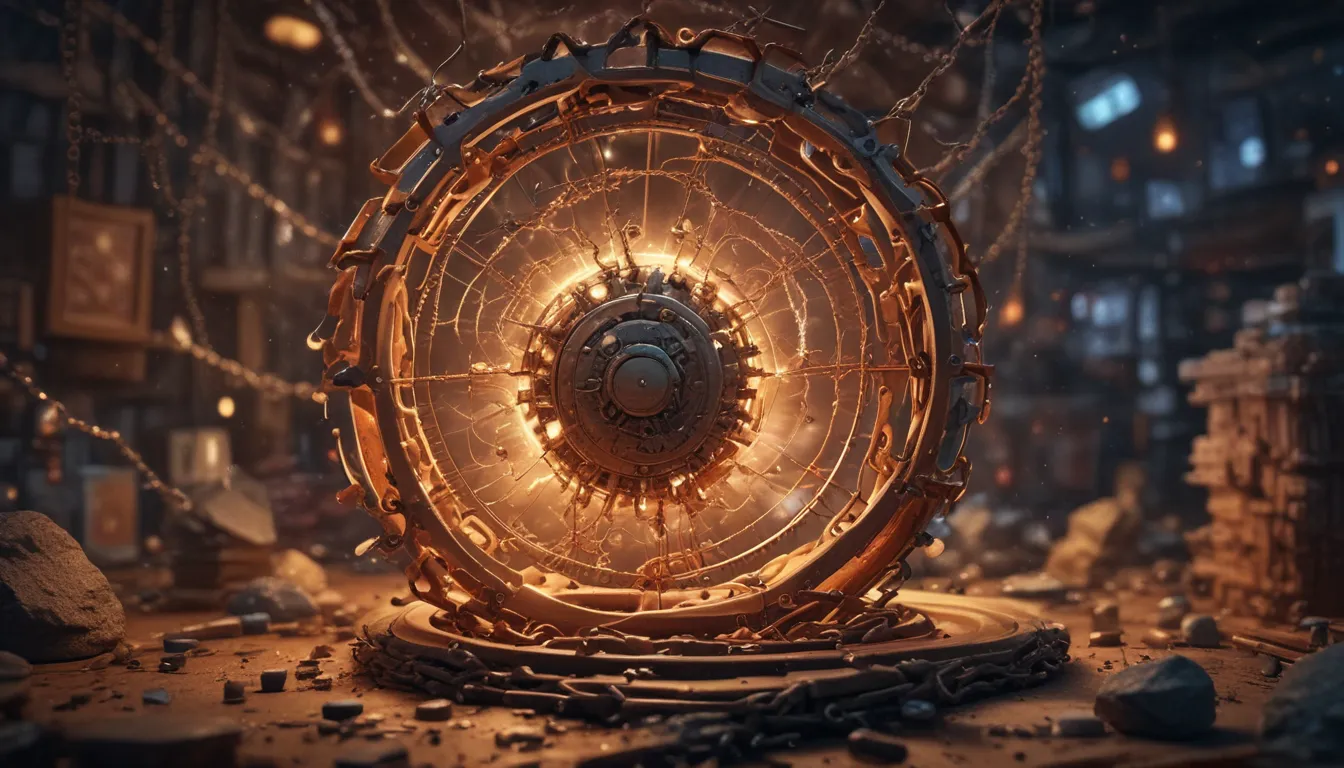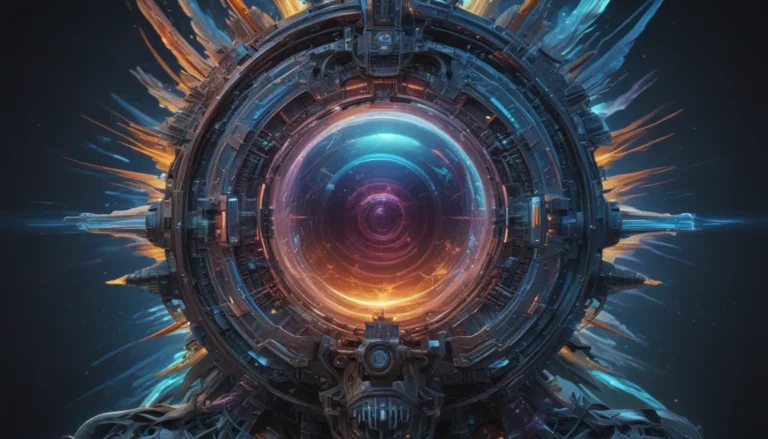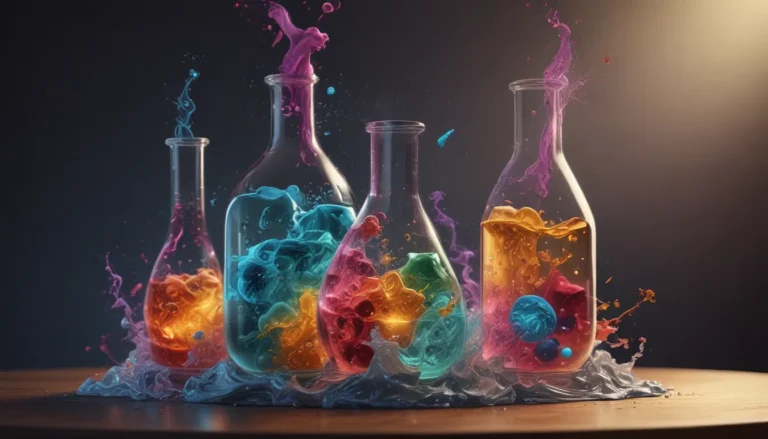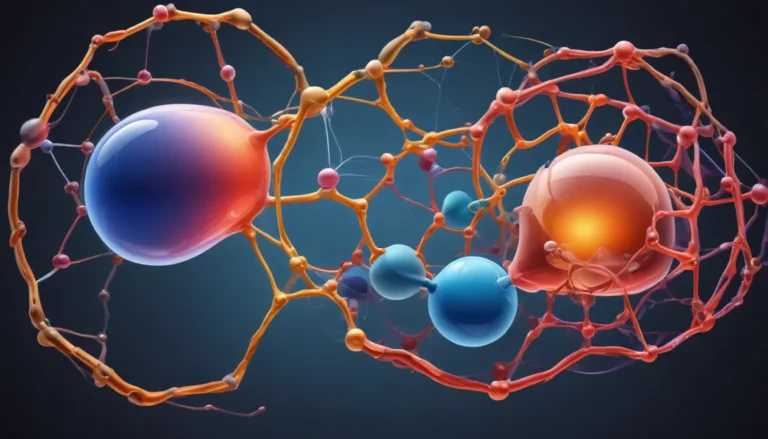A Note About Images: The images used in our articles are for illustration purposes only and may not exactly match the content. They are meant to engage readers, but the text should be relied upon for accurate information.
Chain reactions are not simply a scientific concept; they are intricate phenomena that permeate various disciplines, from physics to chemistry and even social dynamics. Delving into the world of chain reactions opens up a realm of awe-inspiring wonders that showcase the power of interconnected events triggering a cascade of reactions.
The Fascinating World of Chain Reactions
At the heart of chain reactions lies the concept of a self-sustaining reaction where one event leads to a series of similar events in a continuous loop. Originating from the discoveries made in 1933, chain reactions have significantly impacted physics, chemistry, and nuclear energy, revolutionizing the way we understand the behavior of substances and reactions.
The Historic Discovery of Chain Reaction
The groundbreaking discovery of chain reactions can be traced back to Hungarian scientist Leo Szilard in 1933. This pivotal concept laid the foundation for a new era in physics, chemistry, and nuclear energy, reshaping our understanding of how reactions propagate and multiply.
The Milestone Achievement by Enrico Fermi
In a momentous feat in 1942, Italian physicist Enrico Fermi achieved the world’s first controlled nuclear chain reaction at the University of Chicago. This historic experiment was part of the clandestine Manhattan Project, marking a turning point in the development of atomic bombs and nuclear energy.
Harnessing Chain Reactions for Nuclear Power Generation
The controlled nuclear chain reaction forms the crux of nuclear power generation, where the heat produced by the reaction is utilized to generate electricity through the conversion of steam into energy. This environmentally friendly method of power generation stands as a testament to the potential of chain reactions in driving technological advancements.
Different Mechanisms of Chain Reactions: Fission and Fusion
Within the realm of chain reactions, two distinct mechanisms govern their propagation: fission and fusion. Fission chain reactions involve the splitting of heavy atomic nuclei to release energy, while fusion chain reactions entail the merging of light atomic nuclei to form heavier elements, showcasing the diversity and intricacy of chain reactions.
A Critical Role in Nuclear Weapons
The catalytic role played by chain reactions in nuclear weapons cannot be understated. By initiating an uncontrolled chain reaction, atomic bombs unleash a vast amount of energy within a short span, resulting in catastrophic devastation. This sobering reality underscores the dual nature of chain reactions as both creators and destroyers.
Extending Beyond Nuclear Reactions: Chemical Chain Reactions
Chain reactions extend beyond the domain of nuclear reactions into the realm of chemistry. In chemical reactions, the products of one reaction can trigger subsequent reactions, leading to phenomena such as combustion, polymerization, and oxidation of organic compounds, highlighting the diverse applications of chain reactions.
The Role of Chain Reactions in Biological Systems
Within biological systems, chain reactions are pivotal in orchestrating various processes. A notable example is the polymerase chain reaction (PCR), a fundamental technique in DNA amplification that plays a crucial role in molecular biology and genetic research, showcasing the intricate interplay between chain reactions and life processes.
Unveiling the Self-Sustaining Nature of Chain Reactions
One of the captivating aspects of chain reactions lies in their self-sustaining nature, where once initiated, they can perpetuate without external intervention. This inherent property has found applications in industrial processes, ranging from the production of synthetic materials to power generation, underscoring the versatility of chain reactions.
Safeguarding Against Uncontrolled Chain Reactions: Safety Measures
To avert the risks associated with uncontrolled chain reactions, stringent safety measures and control systems are implemented in nuclear reactors. Control rods, which absorb neutrons to regulate the rate of the chain reaction, form a crucial part of the safety protocols implemented to ensure the secure generation of nuclear power.
The Metaphorical Extension of Chain Reactions
Beyond their scientific implications, chain reactions have been metaphorically extended to describe a series of events where each event triggers the next in a continuous cascade. This metaphorical analogy finds resonance in fields such as sociology, economics, and psychology, illuminating the ripple effect of actions and their consequences.
Unveiling the “Domino Effect”
The ubiquitous phrase “domino effect” encapsulates the essence of chain reactions, where one event triggers a chain of subsequent events. Drawing parallels to the falling of dominoes, this concept symbolizes the interconnected nature of events, resonating with the cascading impact of chain reactions in various contexts.
From Science to Pop Culture: Depictions of Chain Reactions
The concept of chain reactions has permeated popular culture through various mediums, including movies, TV shows, and video games. Serving as a plot device, chain reactions create suspense and momentum, driving narratives forward, and captivating audiences with their inherent drama and complexity.
Regulating Nuclear Chain Reactions: International Standards
The safe management and regulation of nuclear chain reactions are governed by stringent international treaties and national regulations. These measures aim to prevent the proliferation of nuclear weapons and ensure the safe utilization of nuclear technology, emphasizing the critical importance of adherence to established safety protocols.
Neutrons as Mediators of Chain Reactions
In the intricate web of chain reactions, neutrons emerge as pivotal particles that mediate the process by colliding with and inducing the fission or fusion of atomic nuclei. Their catalytic role in propagating chain reactions underscores their significance in driving the cascade of events that define chain reactions.
Pioneering Future Applications of Chain Reactions
Researchers are actively exploring potential future applications of chain reactions in diverse areas such as medicine, energy generation, and materials science. These groundbreaking advancements have the potential to revolutionize these fields, ushering in a new era of scientific progress and innovation driven by the power of chain reactions.
Unraveling the Complexities of Chain Reactions
The intricate nature of chain reactions unveils a tapestry of complex behaviors that intertwine various factors and variables. Understanding and navigating these complexities are essential for the safe and efficient application of chain reactions across different domains, highlighting the need for meticulous analysis and management of chain reaction processes.
Concluding Thoughts on Chain Reactions
In conclusion, the world of chain reactions unveils a captivating realm of interconnected events that shape our understanding of the universe. From driving technological advancements in energy generation to unraveling the mysteries of molecular biology, chain reactions permeate various facets of our lives, underscoring their profound impact on scientific progress and societal development.
Illuminating FAQs on Chain Reactions
-
What is a chain reaction?
A chain reaction is a sequence of self-sustaining events where the output of one reaction triggers subsequent reactions in a continuous loop. -
What causes a chain reaction to occur?
Chain reactions are initiated by an initial trigger event that releases energy or particles, setting off a cascade of subsequent reactions. -
How do chain reactions relate to nuclear power?
In the realm of nuclear power generation, controlled chain reactions sustain the release of energy through nuclear fission processes, driving the production of electricity. -
Are chain reactions always destructive?
Chain reactions can have both constructive and destructive applications, depending on the context in which they occur, serving essential roles in processes such as chemical synthesis and energy production. -
Can chain reactions be stopped once initiated?
Yes, chain reactions can be controlled and halted through various methods, such as the use of moderators or absorbent materials to limit reactant availability. -
Are all chain reactions spontaneous?
While some chain reactions may occur spontaneously, others require an external trigger to set off the cascading events, showcasing the diverse nature of chain reactions.
Embark on a Journey of Discovery with Chain Reactions
The intricate world of chain reactions offers a myriad of wonders that transcend disciplinary boundaries, encompassing physics, chemistry, and societal interactions. By unraveling the complexities of chain reactions, we gain invaluable insights into the interconnected nature of events that shape our world, driving scientific progress and innovation forward with each intricate cascade of reactions. Venture into the captivating realm of chain reactions and witness the transformative power of interconnected events that define our understanding of the universe.






